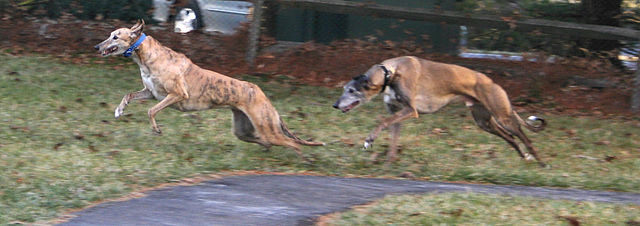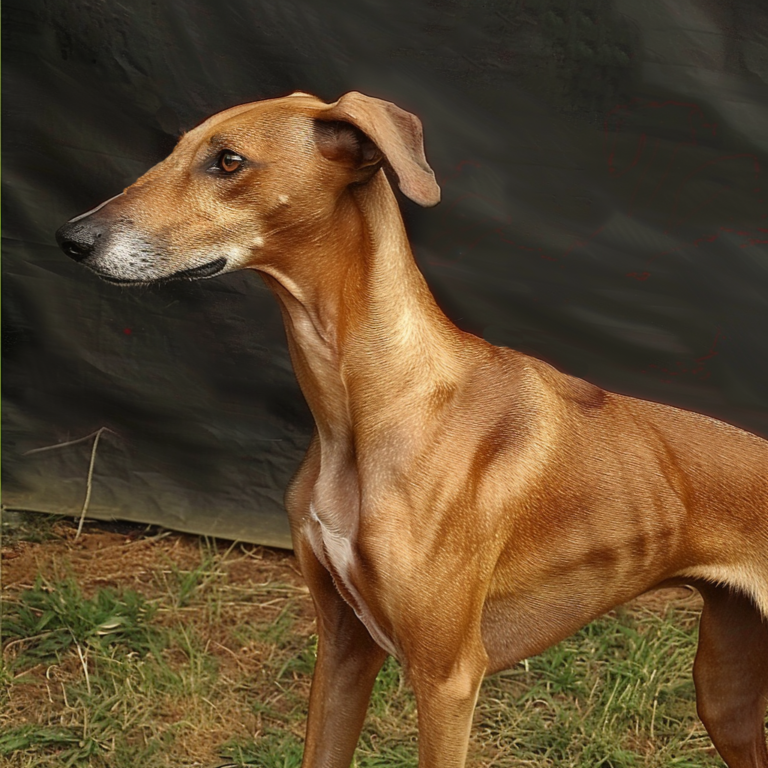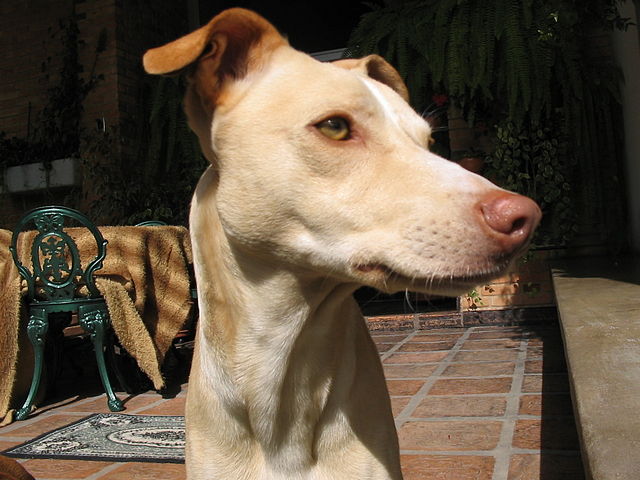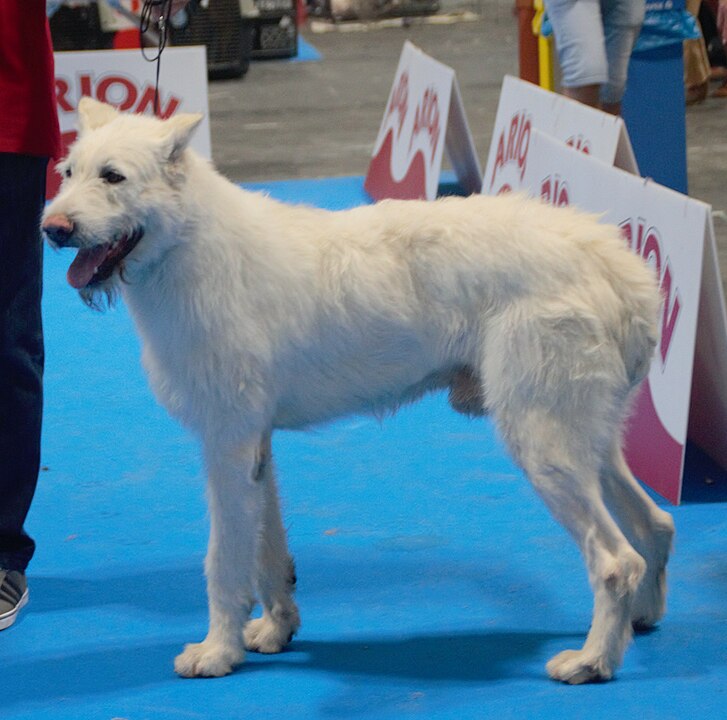The Greyhound is best known as “that skinny racing dog”, but their history is long and proud. A large hunting hound, the Grey was bred to chase down a variety of game. Their very strong prey drive combined with their incredible speed makes them a formidable foe to small animals! Despite their intense hunting instinct, this breed is actually incredibly calm and gentle with people. Not overly affectionate, this breed probably won’t shower you with affection – but they will love you nonetheless. They are friendly towards strangers and often don’t even bark. Some members of the breed can be timid or shy, and need to be eased into new situations.
Although generally good-natured with children, they are not recommended in houses with rowdy or rough kids. They have a delicate sensibility that echoes their delicate frame. Their feelings can get hurt just as easily as they could get bumped or scratched by a clumsy child. While some will just walk away, others might nip if they feel they are in danger. While not normally an aggressive breed at all (they make horrible guard dogs), they can react automatically and instinctively if they are surprised or hurt.
In the house, the Greyhound is fairly unassuming and takes up little space. This said, they do enjoy spreading out over the couch or the bed – and will use their long bodies to take up all of the furniture space that they can! Their tails might also cause problems… they have been known to knock objects off of coffee tables as they walk around. To a certain extent, Greys that are in an exuberant mood will be more likely to swish things off of tables. Calm and composed Greyhounds tend to keep their tails slightly tucked under their bodies and out of “harm’s way”. One other by-product of the Greyhound’s unique build… he may take advantage of his tall frame and long neck and become an expert counter-surfer!
When it comes to energy level inside the house, many Greys are about as lazy as you can get. Sleeping, lounging and napping are favorite pastimes. They save up all of that energy for quick bursts of speed outside – and then it’s time to come back in for another nap! It helps to have a large fenced yard for your Greyhound to sprint around in once he’s recharged. Most humans can’t jog fast enough to allow these dogs to reach full-speed otherwise. Walks/jogs are recommended too, of course, but are not a substitute for sprinting time. This provides a bit of a dilemma… Greyhounds are outstanding dogs for apartments, but they need a fenced yard. Apartment-dwellers need to find a substitute fenced area to make the situation work.
Unlike certain other dog breeds, the Greyhound is naturally skinny and lean. In fact, if you cannot see his ribs, he is overweight and might even be at risk for heart issues! These dogs have fast metabolisms which means that their natural set-weight is supposed to be low. In terms of care, it is important to provide soft blankets and padding for them to lay on. A Grey could develop pressure sores if he is constantly laying on hard floors or surfaces. The low body fat and thin coat also means that this is not a breed to be left outside for long periods of time – they are not well-suited to extremes of temperature, especially the cold.
Greyhounds love the company of other dogs and often live happier lives when they have a canine companion. Some members of the breed have issues with separation anxiety and have a hard time being home alone. Another dog can help with this problem. Note: smaller breeds might trigger the chase instinct in especially-gamey dogs. At best, constant supervision could be required. At worst, the Grey could end up hurting the smaller dog. While some Greyhounds do just fine with the little guys, take it on a case-by-case basis. If worried, go with a breed that is at least medium-sized. As might be expected, cats and other small pets are often also not compatible.
A fenced yard is an absolute necessity because of the Grey’s high prey drive and ability to run very far, very fast! Especially if chasing an animal, a Greyhound will often “turn deaf” to the cries of his owner yelling at him to come back. Not that it is impossible to train a Grey on a recall… but it will take a LOT of practice. Once you throw in a “level 10” distraction (such as a rabbit), the majority of Greyhounds will not come back to their owners if called. They have been bred for hundreds of years to ignore everything but the chase. Hence, the importance of a fence!
When it comes to training, the Greyhound is cat-like and independent. Many are stubborn and don’t want to go along with it unless there is something in it for them. As such, they need a lot of motivation, patience and consistency. It’s not that the breed is dumb… in fact, they are highly intelligent and sensitive animals! However, you will only get results if you put in the work! Owners who take the time to motivate and train their Greys often find a deeper connection between their themselves and their dog. Take note – harsh corrections will get you nowhere in training with this breed. Greyhounds are far too sensitive for that type of training.




